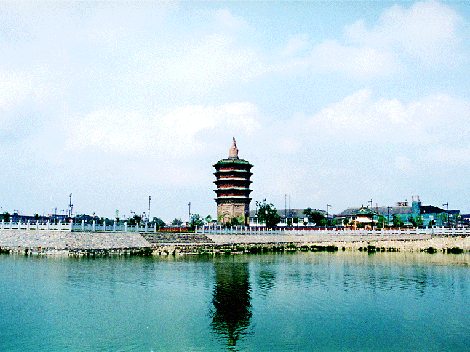Located in North-west Xiaotun Village, Anyang City, Henan Province, Yin Ruins is the first recorded and archaeologically-recognized relics as the capital city in Shang Dynasty. It has a long history of over 3300 years. Since 1928, Chinese archaeologists have for many times discovered historic sites of palaces, mausoleums, ash pits and others of late Shang Dynasty, and have unearthed large quantities of Oracle-Bone, ceramics, jade wares and Bronze wares. In particular, the first discovery of Shang Dynasty Oracle-Bone Inscription reveals the truth about historic capital sites of Chinese Shang Dynasty, and has caused booming interest in Oracle-Bone Inscription studies. The Simuwu Ancient Sacral Square Vessel unearthed from Royal mausoleums in Yin Ruins is the biggest bronze ware ever found in the world, and has become a national treasure in China. In 1976, the Fu Hao Empress Mausoleum of Shang Dynasty was unearthed, which is another important discovery in China’s history of archaeology.

Yin Ruin covers an area of about 24 k©O with 6 km long from west to east and 4 km wide from north to south. It mainly consists of such sub-districts as Palaces, Tombs of royalties as well as commons, handicraft workshops and living quarters for civilians as well as slaves. The ancient Huanhe River flew through the city, which, with a close and reasonable layout, once was the political, economic and cultural center of the Shang Dynasty, even of the Orient. The prosperity of that ancient city can be easily imagined from the largeness of its scope, the magnificence of its palaces, as well as from the quality and quantity of unearthed cultural relics.

In July, 2006, Yin Ruins was listed as World Heritage at the 30th World Heritage Conference. It is universally recognized by international experts in relics of ancient cities as the chief representative of the world’s bronze civilization from 14th century BC to 11th century BC, comparable to ancient Egypt, Babylon and India.